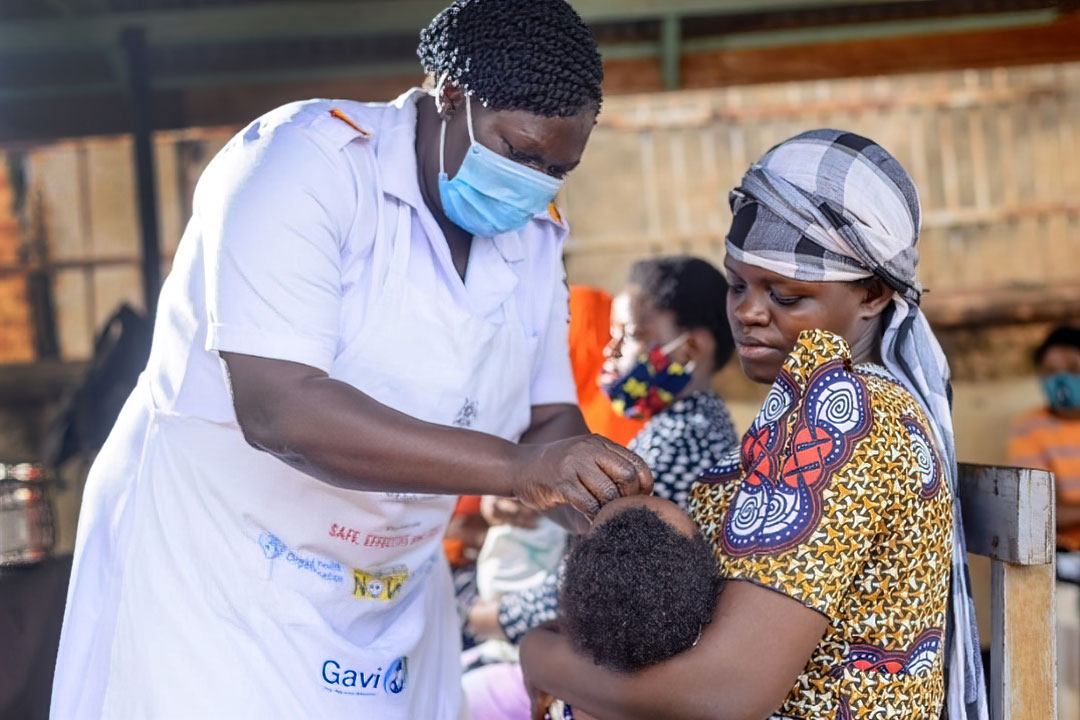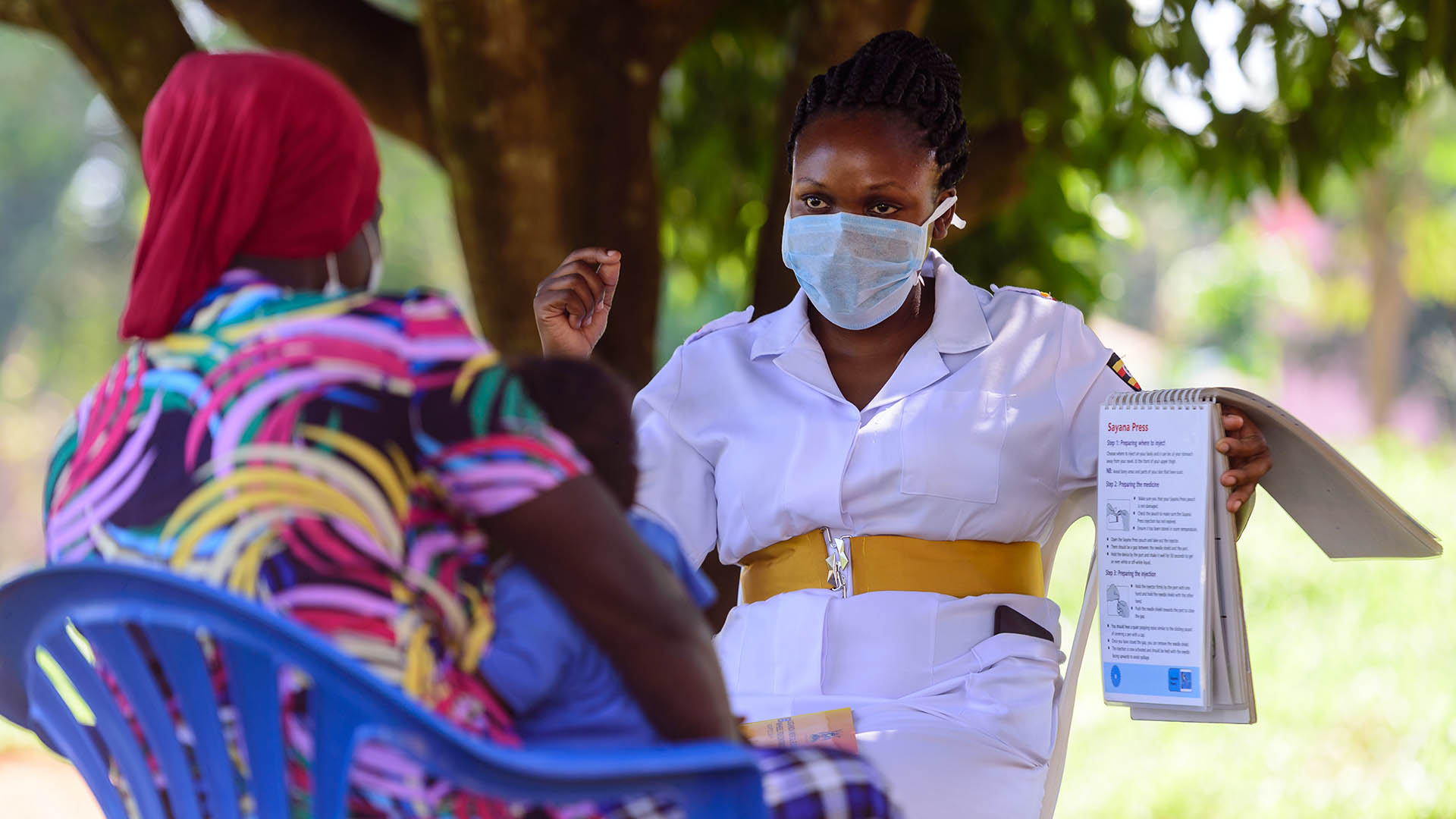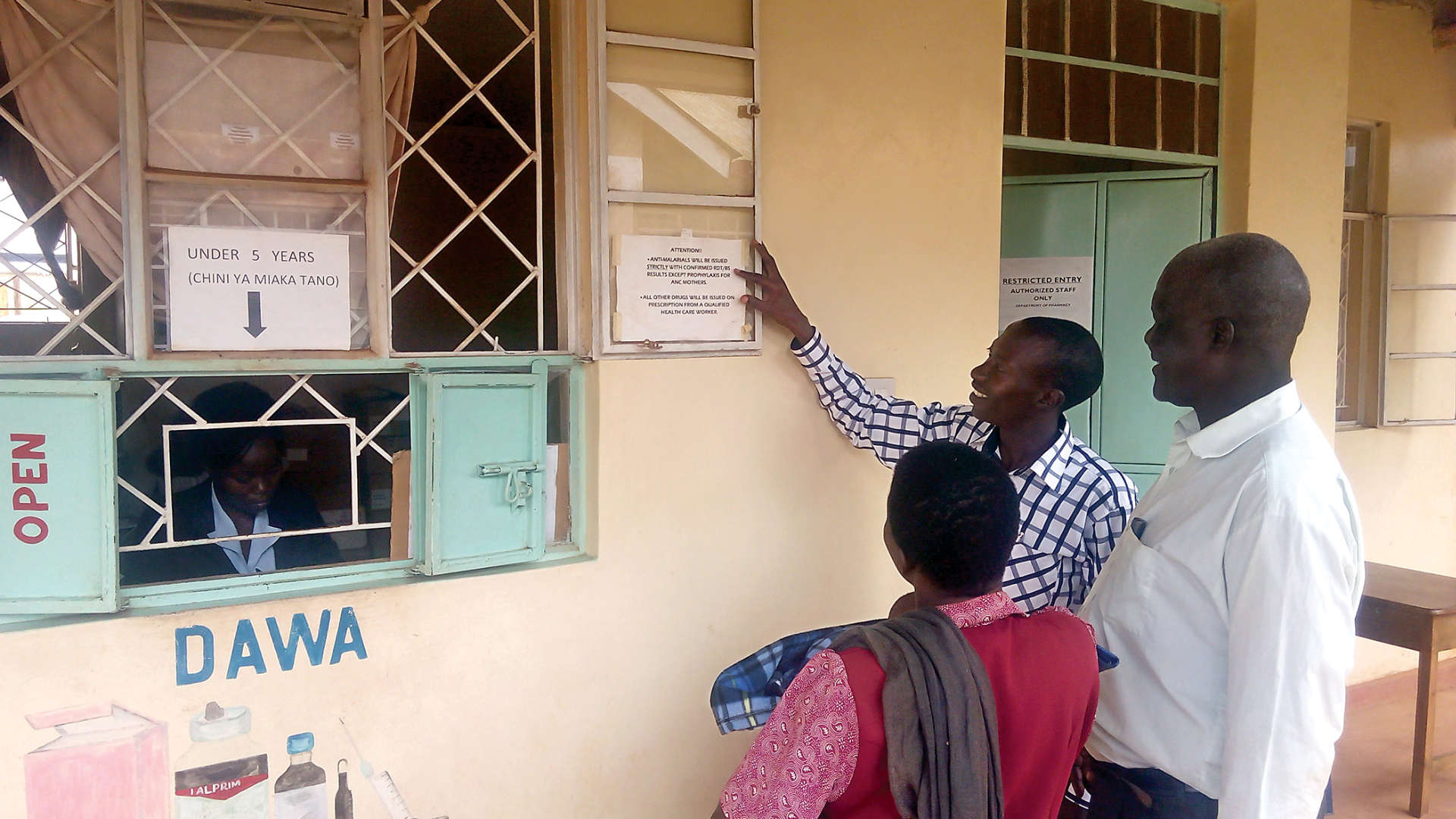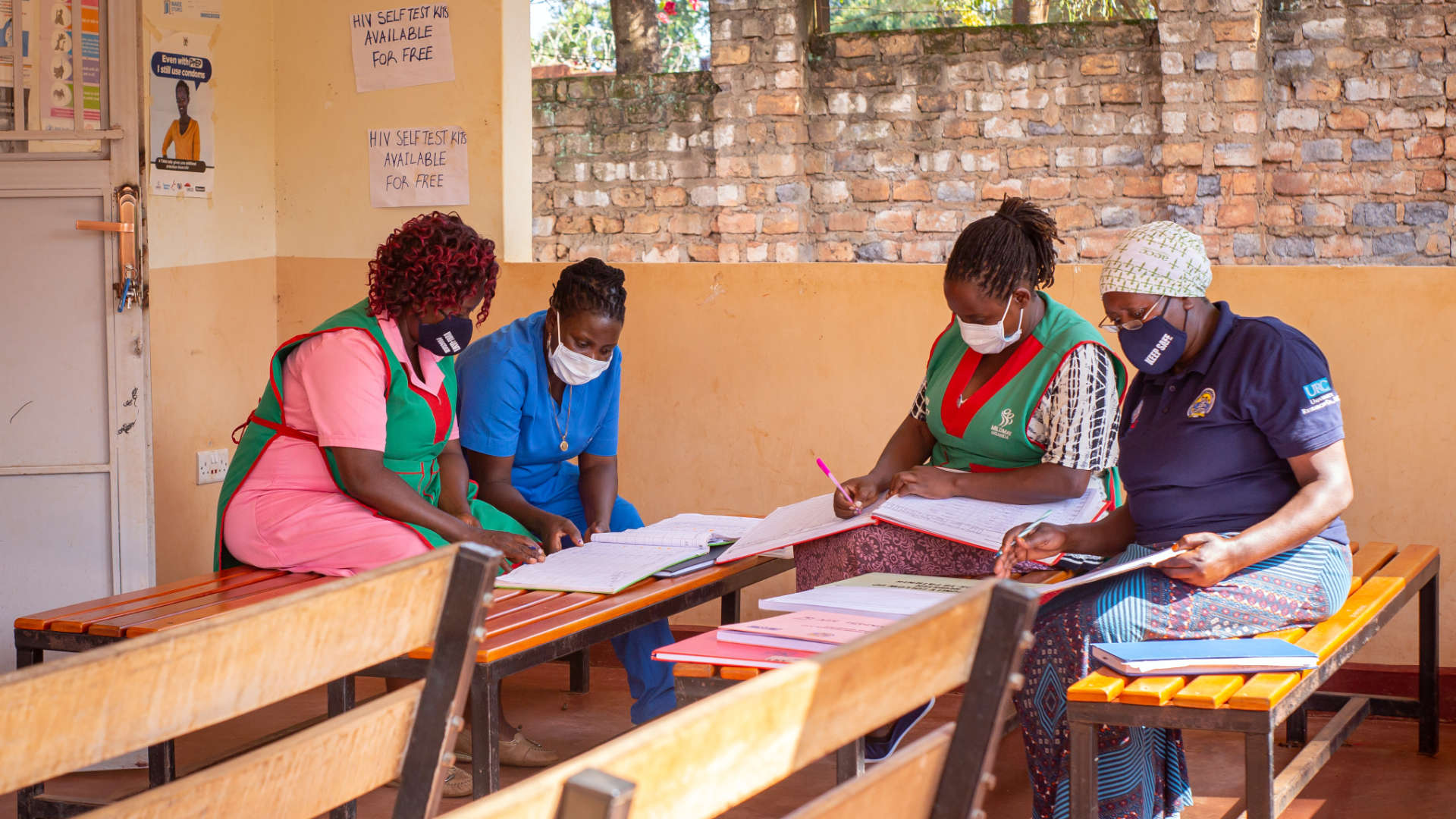Baby Uthman, 18-months old, from Mulanga Village, Bugweri District in East Central Uganda missed his scheduled Diphtheria-Tetanus-Pertussis (DPT3) immunization at 14 weeks.
“We did not have money to transport Uthman for his vaccinations and failed to go because the health center is far away from us,” said his mother Amina. Nor did not he receive his measles vaccine at the recommended age of nine months, increasing his risk of contracting preventable diseases.
Uthman was one of many children in Bugweri District in East Central Uganda who has not been fully immunized. The district had only fully immunized 58.1% of one-year-olds for the period October-December 2019, according to Uganda Ministry of Health DHIS2 data.
The USAID Regional Health Integration to Enhance Services in East Central Uganda (RHITES-EC) Activity prioritized Bugweri as a “learning district” to intensively implement interventions to improve immunization coverage using the Reaching Every District/Reaching Every Community/Reaching Every Child (RED/ REC) approach. RHITES-EC held a performance review meeting with the Bugweri District leadership and health team to identify gaps and areas of improvement for immunization delivery.
Obstacles to Achieving Immunization Coverage
Bugweri District’s suboptimal performance in immunization delivery was attributed to the poor road network limiting health care facility access and utilization of health services, high transport costs to health care facilities, and long wait times at facilities. These factors deterred mothers from bringing their children to the Expanded Program on Immunization Center at Busesa Health Center IV.
The district also grappled with the presence of religious sects that do not support immunization, and community myths and misconceptions about immunization. For example, some community members reported that “immunization is a poison treatment meant to kill people.”
To address these misconceptions, RHITES-EC, in collaboration with the district health team and the health care facilities, held weekly radio talk shows and community dialogues. These platforms provided an opportunity for the health care workers to listen to widespread views and experiences in the community and dispel fears about vaccines.
How Village Health Workers Helped Increase Immunization Coverage
RHITES-EC further supported Bugweri District to implement a social behavior communication door-to-door campaign. The campaigns engaged 320 village health team (VHT) members increase the community’s access to immunization services in poorly performing sub-counties. Each VHT was given basic information about immunization. They mapped children in their village, reviewed their status, provided basic education to households on immunization, and linked households to a nearby health care facility.
Uthman’s parents were among the community members who were approached by a VHT. “The VHT visited our home and educated us about immunization. He also patiently responded to our questions,” Amina explained. As a result of the visit, Uthman eventually received his third DPT dose by a trained health worker during an immunization outreach mobilized by the VHT.
“The health workers came. All the children who had not been immunized received their shots. Health workers should continue to come to the community,” Amina said.
Action Planning to Reach Underserved Communities
With support from district health team (DHT) leaders, health care facilities implemented several interventions to improve the district immunization coverage. These included mapping and identifying underserved communities, facilitating audience appropriate community mobilizers to sensitize and mobilize targeted communities and households for immunizations, and re-establishing weekly community-level immunization outreaches to link health services to communities. The DHTs also conducted onsite health facility mentorships and supportive supervision to ensure that health care workers were correctly immunizing children.
DHTs also actively monitored use of immunization data for action planning, management of resources, and creation of micro-plans to facilitate outreach to underserved communities in line with the RED/REC approach. These activities are augmented by intensified VHT-led interpersonal communication and mobilization actions contextualized and adapted to address immunization coverage challenges in each sub-county.
Efforts Have Paid off with Higher Immunization Rates
With support from the Uganda Ministry of Health and the Global Alliance for Vaccines Initiative, Bugweri District received a vehicle, motorcycles, and gas-fueled fridges to facilitate weekly outreach to hard-to-reach areas.
Bugweri District improved from the worst category of immunization service delivery (Category 4) in October 2019 to the best category of immunization service delivery (Category 1) in June 2020. And the proportion of fully immunized children increased from 58.4% in October-December 2019 to 81.2% in July-September 2020.
But the success is not limited to Bugweri District. Similar approaches have been used with significant gains in the 12 districts of East Central Uganda where RHITES-EC operates. The percentage of infants in these districts who are fully immunized at age one increased from 51% in October-December 2019 to 80% by July-September 2020.
Interventions to Improve Uptake of Immunization Services
The USAID RHITES-EC Activity uses a variety of tactics to improve immunization coverage, including:
- Working with district health teams to introduce daily immunization services at health care facilities;
- Using immunization data to map and identify underserved parishes and villages to serve as outreach sites;
- Orienting and equipping audience-appropriate mobilizers with knowledge of adolescent sexual and reproductive health (to better understand teenage mothers), interpersonal communication skills, and mobilization tools to help them deliver focused immunization messages;
- Generating lists of villages and parishes and assigning village health teams (VHTs) to map out communities based on the burden of unvaccinated children;
- Deploying VHTs and service providers to conduct targeted mobilization for immunization and other child health services; and
- Facilitating VHTs and peer leaders to conduct group sessions and home visits to sensitize households about the benefits of timely immunization services as recommended by the Ministry of Health.



